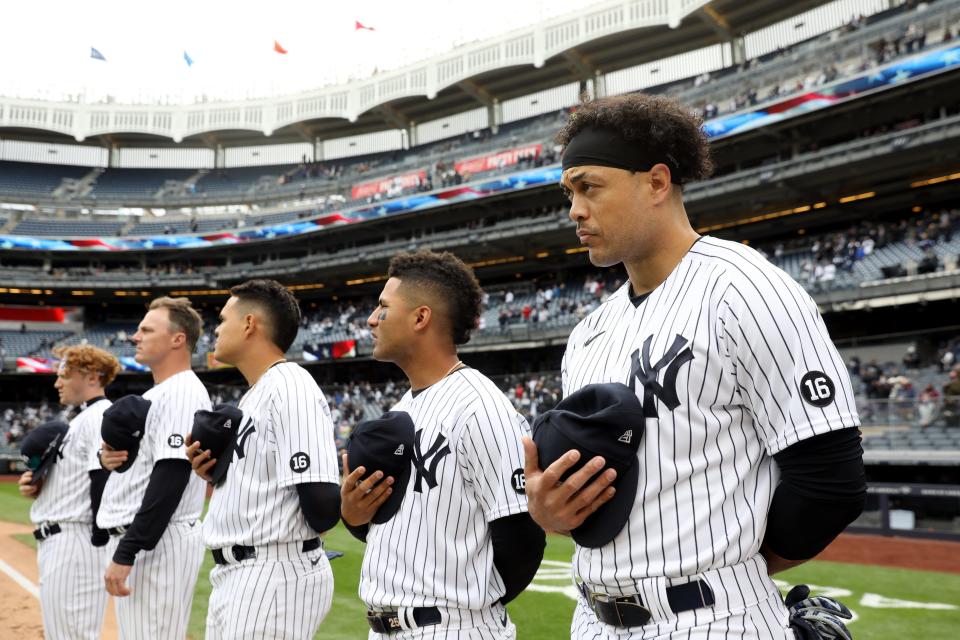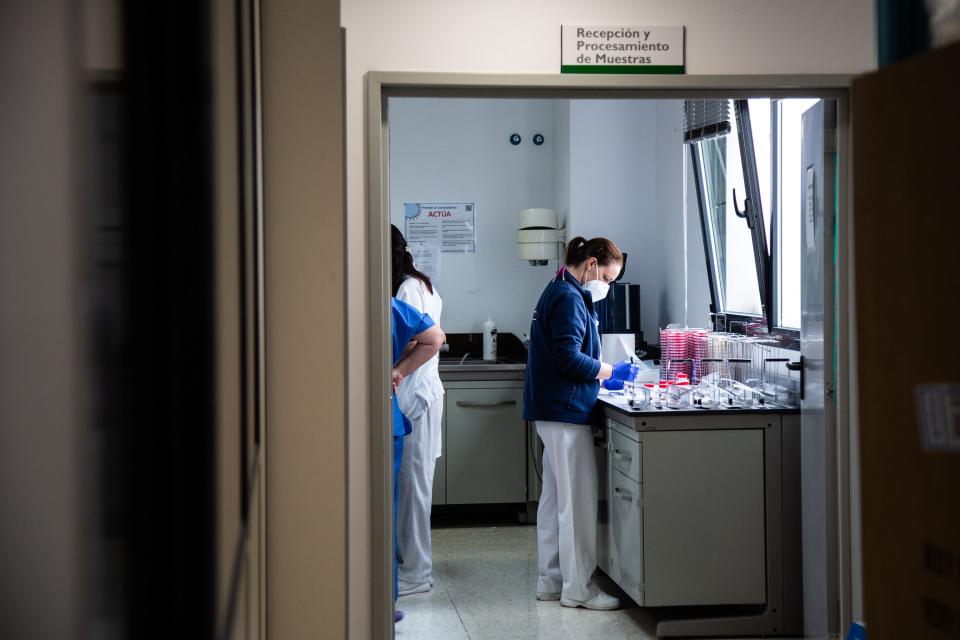The Yankees' 'breakthrough' COVID-19 infections are a case study in how the virus can spread among vaccinated people

Eight members of the Yankees organization have tested positive for COVID-19 after being vaccinated.
These kinds of "breakthrough infections" are usually mild or asymptomatic.
Relaxed restrictions and the spread of variants may have increased the risk of an outbreak.
The Yankees provided an important lesson in epidemiology this week: Even if you've been fully vaccinated, it's still possible to get the coronavirus. As of Thursday, three of the team's coaches, four members of its support staff, and one player - shortstop Gleyber Torres - have tested positive for COVID-19, though they got vaccinated several weeks ago.
The Yankees players and coaches all received Johnson & Johnson's single-dose shot, manager Aaron Boone told ESPN. In clinical trials, that shot was found to cut the risk of coronavirus infection by 66% globally, and by 72% among US trial participants. The trial also found that J&J's shot reduced the risk of severe disease by 85%.
That means a small minority of vaccinated people may still develop "breakthrough infections," though these are usually mild or asymptomatic.
Just one of the organization members who tested positive is showing symptoms, Boone told the New York Times on Wednesday. On Thursday, however, he told ESPN that all eight members are asymptomatic.
"I feel like, in a lot of ways, because we're vaccinated, we're kind of good and able to deal with this," Boone told the Times.
The Yankees' travel schedule, sustained proximity to one another, and lack of masks may have made the team particularly susceptible to breakthrough infections.
The Yankees relaxed safety protocols in late April, after at least 85% of the traveling team had been vaccinated. That meant players and coaches could take off their masks in the clubhouse and dugouts, per Major League Baseball regulations.
As with any COVID-19 case, the risk of breakthrough infections is highest in close, indoor quarters where people aren't distanced or wearing masks.
"These members are in close contact, aren't masking, sharing locker rooms and meals, etc.," Dr. Purvi Parikh, an immunologist in New York City, told Insider.
The spread of more contagious variants, she added, could also make breakthrough infections more common in crowded environments. Right now, the B.1.1.7 variant - which was first identified in the UK - is the dominant strain in the US. Another variant, B.1.526, accounted for nearly half of the coronavirus samples genetically sequenced in New York City as of last month. But it's not clear which variant, if any, caused the Yankees outbreak.
The organization also tests regularly for COVID-19, so it's more likely to catch infections than in the average group of people - especially asymptomatic ones.
Other 'breakthrough infection' outbreaks were also relatively mild

Other breakthrough infections in the US have similarly occurred in clusters.
In March, 26 residents at a Kentucky nursing home tested positive for COVID-19, even though 19 of them had been fully vaccinated with Pfizer's shot. Three people, including one vaccinated resident, died. But more than 86% of the fully vaccinated residents who tested positive were asymptomatic, according to a Centers for Disease Control and Prevention report.
The virus' attack rate was also three to four times higher among the unvaccinated residents.
In the case of the Yankees outbreak, "we would expect that the severity is less than it would be otherwise had they not been vaccinated," Emily Gurley, an epidemiologist at the Johns Hopkins Bloomberg School of Public Health, told Insider.
The goal of vaccines, she added, isn't to eliminate all infections. It's to prevent people from becoming severely ill. In that sense, mild breakthrough infections can be seen as evidence that the vaccines are doing their job.
"Even if we see more infections, if they're all mild, then in my mind that's an acceptable risk because we face the threat of other mild infections on a daily basis," Gurley said. "That's really all we can hope for in our interactions with this virus."
Expect to see more breakthrough infections in the future

As of April 26, the CDC had received around 9,200 reports of breakthrough infections out of more than 95 million people who'd been fully vaccinated against COVID-19 by that point. Around 27% of those cases were asymptomatic, and just 1% of those people had died.
But breakthrough infections are often hard to spot, since people with mild or asymptomatic cases may not think to get tested. For that reason, experts said, these cases could be more prevalent than current data suggests.
Variants, too, might be making breakthrough infections more common.
The CDC found that the Kentucky nursing home residents had been infected with a variant that appears to be more transmissible than the original strain. The variant carries a mutation found in two other prominent and highly contagious variants: B.1.351 (first identified in South Africa) and P.1 (first identified in Brazil). Both of those variants have been shown to partially evade protection from vaccines or natural infection with the original strain.
Boone told ESPN on Thursday that the MLB is looking into whether variants may have played a role in Gleyber Torres' case, since Torres previously contracted COVID-19 during the offseason.
Read the original article on Business Insider

